Dungeons & Dragons 5E has, by default, a high fantasy setting. But, what happens when you introduce firearms into a fantasy environment? The result is, quite frankly, explosive, and it can lead to some very cool moments.
Firearms are an optional rule introduced in the Dungeon Master’s Guide, but they haven’t really been touched by official content since then. Guns deal more damage than standard weapons in 5E and are designed for a campaign with higher lethality. That said, guns’ wielders do have to reload their ammunition, making some awkward to use for all but the most dedicated builds.
How guns and firearms function in 5E
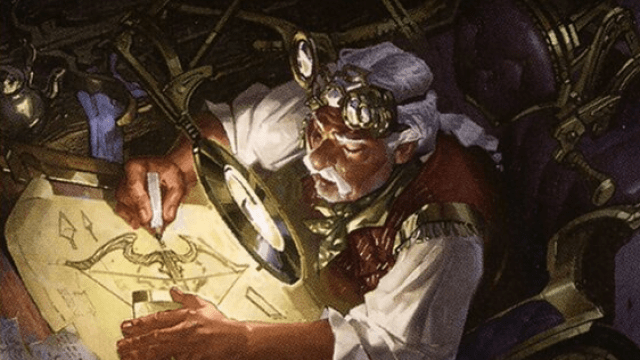
Firearms are an optional rule that your DM may choose to include in 5E. If they do, all firearms are martial weapons, meaning that only classes with martial weapon proficiency—and the Artificer—have proficiency with guns. Guns can be enchanted normally and come with several specific magical variants, just like how you can enchant a Heavy Crossbow.
Despite being worlds apart from standard weaponry in 5E, there are no extra proficiencies required to use Firearms. Still, an intrepid adventurer can use the Gunner feat to gain proficiency with guns if they don’t already have it. The feat also lets the benefactor ignore the Loading property of guns and ignore disadvantage on attack rolls from being too close to a hostile creature while shooting a gun.
This is a slightly worse version of Crossbow Expert, but is critical for using a gun long-term in a campaign. That’s because of how detrimental Loading is for martial classes who get Extra Attack. Some guns—especially in more modern time periods—don’t have the Loading property, and thus this feat is less required.
Types of firearms
Firearms are grouped into three time period categories: Renaissance, Modern, and Futuristic. Renaissance guns are slightly above the power level of Heavy Crossbows, but can functionally survive in a standard campaign without power-creeping most weapons.
Modern Firearms include most weapons in the gun category. They deal very high damage and are very efficient, outclassing all ranged weapons and making melee weapons less optimal. Futuristic Firearms deal extraordinarily high damage, and usually deal radiant or necrotic damage, as they shoot lasers at enemies instead of bullets.
Renaissance firearms
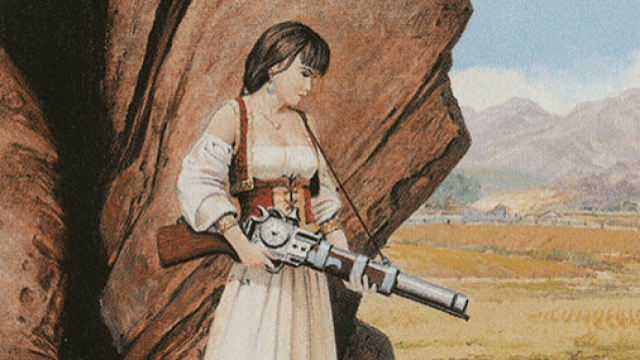
Renaissance-era firearms refer to very early prototypes of guns. As a result, there are only two guns in this category: One that uses two hands, and another that doesn’t.
| Name | Damage | Properties |
| Musket | 1d12 piercing | Ammunition (40/120 feet), Loading, Two-Handed |
| Pistol | 1d10 piercing | Ammunition (30/90 feet), Loading |
The Musket is your traditional “big gun,” and is the only ranged option that deals 1d12 damage by default. This is a gigantic damage die, but the gun has a handful of other problems. Its range is terrible, with 40 feet being less than a third of that of a Longbow. It also has the Loading property, so Extra Attack or other ways to get additional attacks don’t work. Still, this damage die is gigantic and worth considering in the early game. It’s definitely worthwhile with the Gunner feat.
The Pistol is also quite powerful. 1d10 damage is unheard of for any one-handed weapon without the Versatile trait, let alone a one-handed ranged option. That said, 30 feet is a pitiful range, and you’re still stuck with the Loading property.
These two guns are fantastic before you get Extra Attack, and are very good if you can dedicate feats to your weapons—something quite easy for a Fighter or even Rogue to do. These are the worst guns in the system, so it’s only getting better from here.
Modern firearms

These guns are designed to bring a campaign into a setting technologically analogous to the 1900s. Not quite as powerful as 21st-century weapons, these guns deal high damage and are very efficient. To properly use these guns, most characters who can use martial weapons will need to build around them.
| Name | Damage | Properties |
| Automatic Pistol | 2d6 piercing | Ammunition (50/150 feet), Reload (15 shots) |
| Automatic Rifle | 2d8 piercing | Ammunition (80/240 feet), Burst Fire, Reload (30 shots), Two-Handed |
| Hunting Rifle | 2d10 piercing | Ammunition (80/240 feet), Reload (five shots), Two-Handed |
| Revolver | 2d8 piercing | Ammunition (80/120 feet), Reload (six shots) |
| Shotgun | 2d8 piercing | Ammunition (30/90 feet), Reload (two shots), Two-Handed |
For reference, Reload is the number of attacks you can make before spending an action to replenish its ammo, and Burst Fire allows an attack to instead target a 10 foot cube—like the Grease spell.
The worst gun by far on this list is the Shotgun. Historic in games for dealing huge damage at the cost of range and reload time, the Shotgun deals the same damage as the Revolver. All while having less range, terrible Reload, and the Two-Handed trait. That poor Shotgun.
The Hunting Rifle and Revolver are both reasonable weapons with good range and damage, but they butt into the Reload trait. Reload sets you back a turn after you make a certain number of attacks, and these guns only last about two or three turns for a character with Extra Attack. They’re hard to use well consistently.
The Automatic Pistol and Rifle are both very strong. The Pistol deals less damage and has less range, but leaves a hand open. The Automatic Rifle takes both hands but has a really huge clip, can deal area-of-effect damage, and has fantastic range. This is one of the few really good two-handed guns.
Futuristic firearms
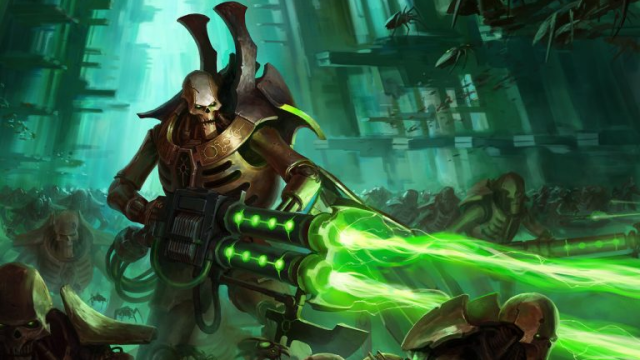
There are three laser-based firearms in DnD 5E, and they’re all very powerful. These guns deal massive damage and have gigantic clips, making them a force to be reckoned with. Even spellcasters using high-level spells will have trouble outpacing these weapons.
| Name | Damage | Properties |
| Antimatter Rifle | 6d8 necrotic | Ammunition (120/360 feet), Reload (two shots), Two-Handed |
| Laser Pistol | 3d6 radiant | Ammunition (30/120 feet), Reload (50 shots) |
| Laser Rifle | 3d8 radiant | Ammunition (100/300 feet), Reload (30 shots), Two-Handed |
These guns are simply ridiculous. Laser Pistols deal very high damage, but suffer from their short range of 30. You’re getting up-close and personal, but you’re also dealing an average of 11 damage per shot. That’s unheard of for Greataxes or Greatswords, let alone a one-handed ranged weapon. Laser Rifles are much the same, dealing slightly more radiant damage but with a ludicrous range that covers any map you can think of. At the cost of another hand being needed, that’s well worth it.
The Antimatter Rifle has terrible Reload, just like the Shotgun. That sets it up for failure, but this gun deals an average of 27 damage without a Dexterity modifier. Per shot. With Extra Attack, this is 54 damage through the weapon alone. It’s well worth spending every other action reloading. A Ranger with Sharpshooter, Hunter’s Mark, and high Dexterity can easily find themselves chunking 100 health off of foes in a turn.
These guns are far above the standard power level of DnD 5E. DMs and players alike must be very careful when using them.
Should I have guns in my 5E campaign?—explained

Realistically, the only guns that are safe to have in standard campaigns are Renaissance-era firearms. All other firearms are far more powerful than other weapons, forcing many martially-minded characters to decide between standard builds or just shooting everything. Campaigns with modern or futuristic firearms should be genre-focused adventures where having higher-level technology is the goal of the game.
Renaissance-era firearms do powercreep ranged options at a certain level, but not by much. A Pistol is by far the strongest one-handed ranged option in a campaign with renaissance guns, but a Crossbow Expert can still out-damage someone with a Pistol due to their bonus action attack. Muskets have better damage than Longbows or Heavy Crossbows but terrible range that balances things out.
As soon as you introduce Modern firearms into the game, you’re introducing a genre shift. Campaigns with these weapons tend to be World War-esque campaigns where you play as more present-day characters with fantasy themes. This is great fun, but it does also mean most characters are going to be shooting Revolvers at each other. Magic is still not out-scaled and can do meaningful damage in most conflicts here, while still offering the excellent crowd-control and buff options we know and love it for.
Futuristic Firearms are where you should draw the line. The Antimatter Rifle deals a whole Sunbeam worth of damage, while Laser guns hit for Chromatic Orbs with every attack. Damage-based Sorcerers will cry at this level of technology. These weapons are legitimately unhealthy to give to low-level characters, as they will very, very easily one-shot any enemy—or player—that gets hit.
Our advice is as follows:
- Renaissance firearms are okay to introduce into campaigns, especially with Artificers or other technology-based characters.
- Modern firearms should be distributed only in genre-focused campaigns focusing on mid-1900s warfare.
- Futuristic firearms should be a reward for mid-to-late-game adventures or a gimmick for a boss fight. They shouldn’t be easy to get, and finding more ammunition for them should be an adventure in it of itself. Even in futuristic campaigns, access to these firearms will lead to very quick encounters where few players get the chance to shine.
While not perfect for every campaign, firearms are enjoyable to use and should be experimented with. Just keep the lasers out of your players’ hands unless you really know what you’re doing—or trust that they won’t know what to do with it.


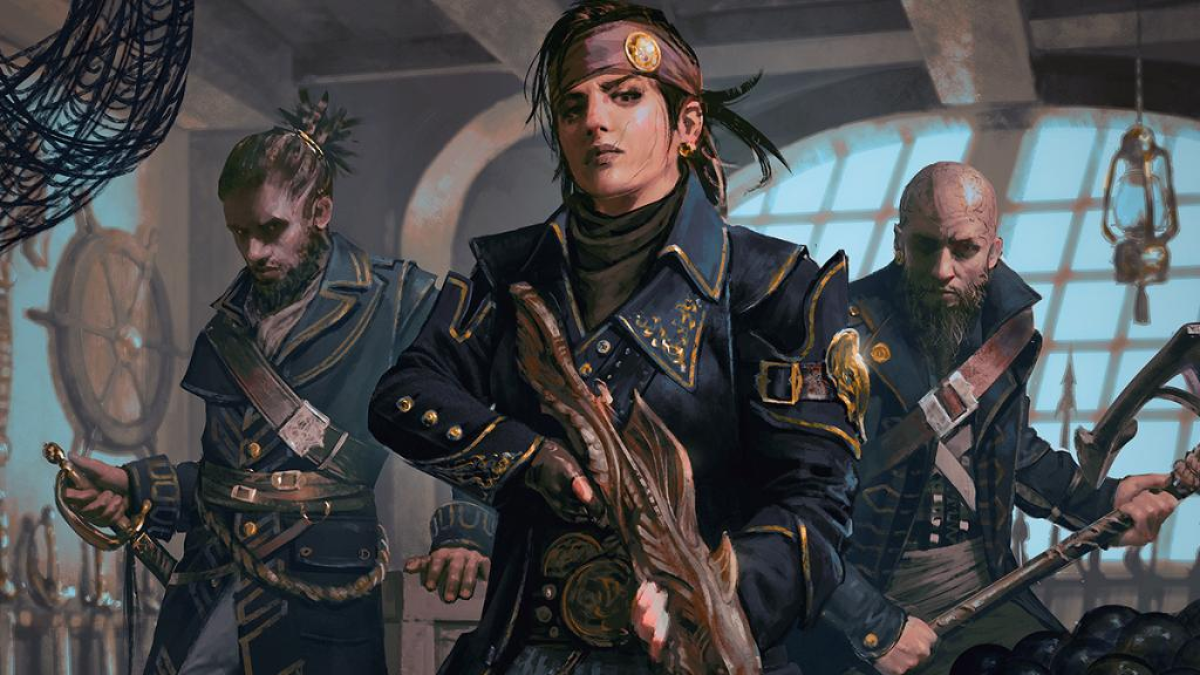
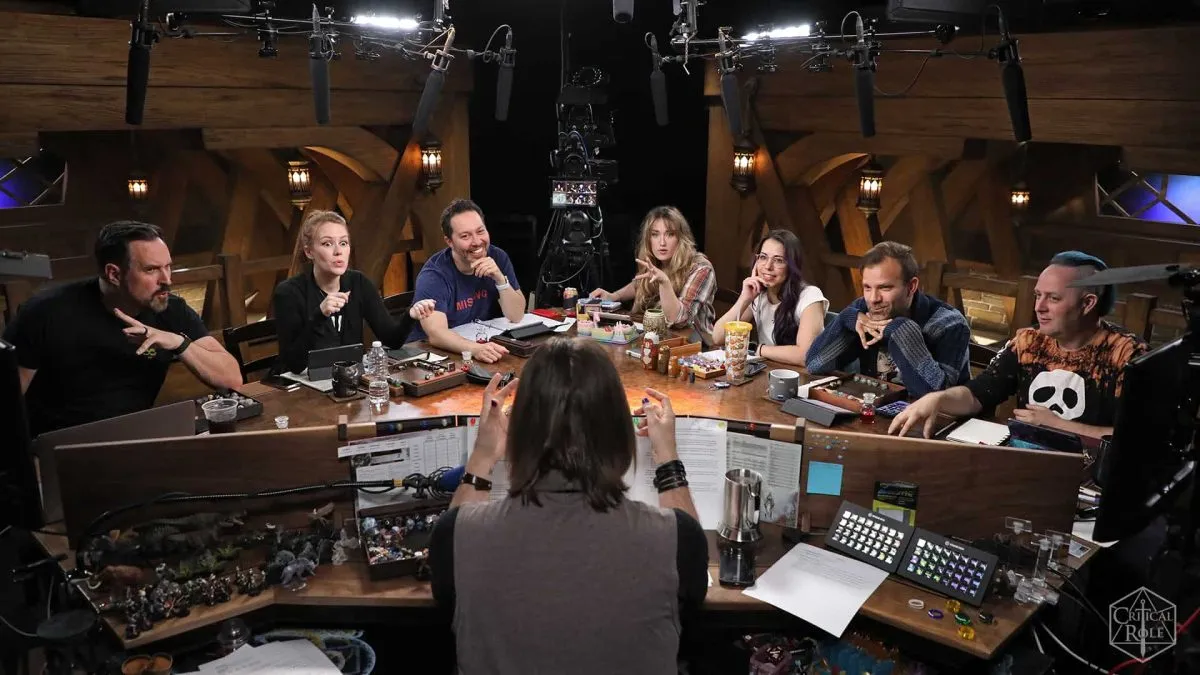
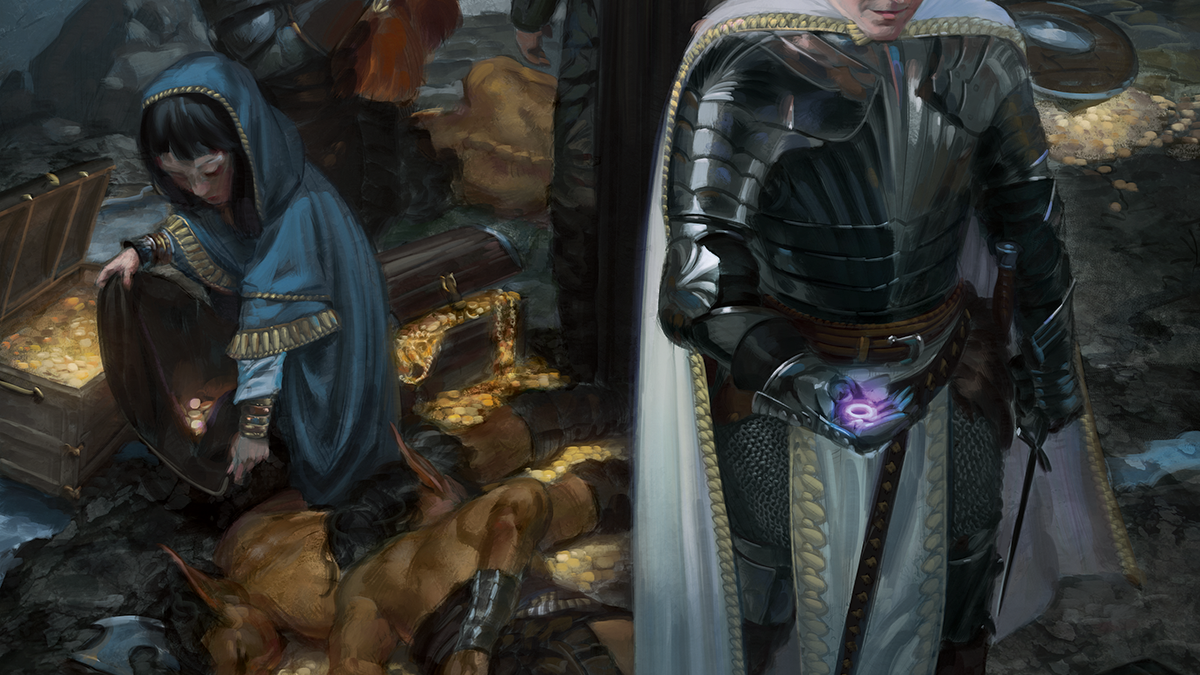
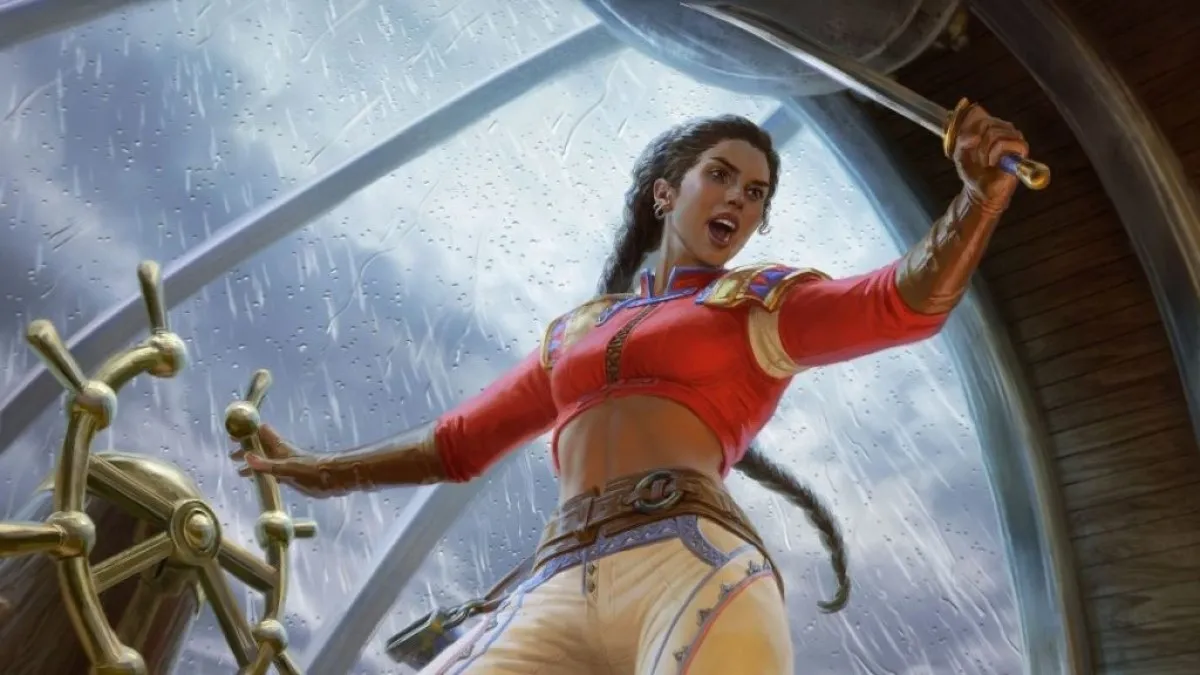
Published: Nov 5, 2023 08:08 am